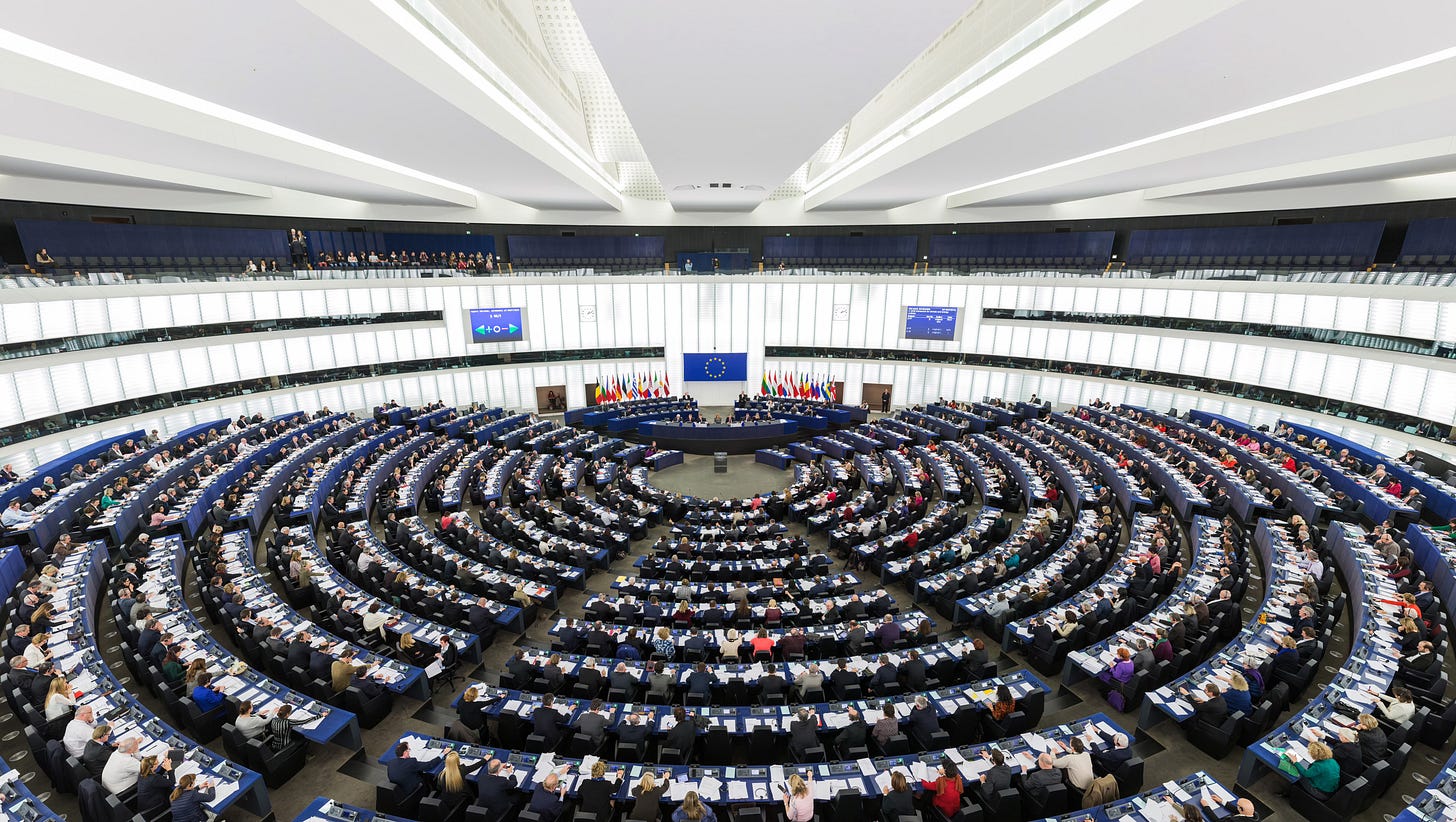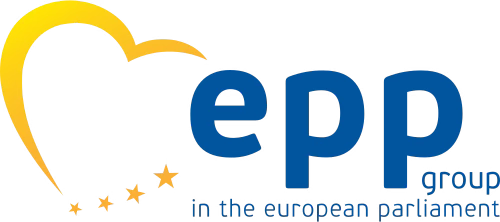Which ideology will you vote for?
#77
Dear Friends of Democracy,
With the European elections around the corner (Thu, 6 – Sun, 9 Jun 2024), I’ll delve a bit into the workings of the European Parliament over the coming weeks.
Let’s start with the parliament's location, which is in … well, it's a bit complicated.
Strasbourg is the seat of the European Parliament, but since many of the EU institutions have been in Brussels over time, its members (MEPs) decided to organise more of their work in Brussels. So most of the important EU Parliamentary Committees (here is the list of all), which are designed to aid the European Commission in initiating legislation, take place in Brussels, also parts of the plenary sessions are held there. On top of that, Parliament's Secretariat (its staff) is based in Luxembourg.
But today‘s topic is less about the place and more about the most powerful part of the parliament: its political groups. Because the members of the parliament organise themselves into ideological groups rather than national cleavages.
Why is this important?
At the election, you will not vote for a European political party but for a national party. Most of them also run for national elections, so you might know them on that level. But what do they stand for on the European level? It gives you some orientation if you know which political group your party belongs to at the European level.
Here is the list of the seven political groups the EU parliament is organised:
European People‘s Party (EEP)
Political position: Centre-right
Ideology: Christian democracy, Liberal conservatism, Conservatism, Pro-Europeanism
Size: 176 of 703 members
Leader: Manfred Weber
List of the national parties that belong to EEP.
Progressive Alliance of Socialists and Democrats (S&D)
Political position: Centre-left
Ideology: Social democracy, Progressivism, Pro-Europeanism
Size: 144 of 703 members
Leader: Iratxe García
List of the national parties that belong to S&D.
Renew Europe (Renew)
Political position: centre
Ideology: Liberalism, Social Liberalism, Conservative Liberalism, Classical Liberalism
Size: 101 of 703
Leader: Stéphane Séjourné
List of the national parties that belong to Renew.
Greens/European Free Alliance (Greens/EFA)
Political position: Centre-left to left-wing
Ideology: Green politics, Regionalism, Minority politics, Pro-Europeanism
Size: 73 of 703
Leaders: Terry Reintke, Philippe Lamberts
The Greens/EFA group consists of five distinct European political parties, namely
the party of the European Free Alliance (EFA),
plus the smaller European Pirate Party (PPEU),
and parts of Animal Politics EU (APEU).
European Conservatives and Reformists (ECR)
Political position: Right-wing (including centre-right and far-right factions)
Ideology: Conservatism, National conservatism, Soft Euroscepticism, Anti-Eurofederalism
Leaders: Raffaele Fitto, Ryszard Legutko
Size: 66 of 703
List of the national parties that belong to ECR
Identity and Democracy Party (ID Party)
Political position: Right-wing to far-right
Ideology: Nationalism, Right-wing populism, Anti-immigration, Euroscepticism
Leader: Marco Zanni
Size: 62 of 703
List of national parties that are part of ID Party.
The Left in the European Parliament (GUE/NGL)
Political position: Left-wing to far-left
Ideology: Democratic socialism, Soft Euroscepticism, Communism
Leaders: Manon Aubry, Martin Schirdewan
Size: 38 of 703
List of national parties that are part of GUE/NGL.
There are also 46 non-attached members of the European Parliament who do not belong to one of the recognised political groups.
Why these groups at all?
First, it is obviously easier to form an opinion with like-minded colleagues. Furthermore, groups have procedural privileges within the parliament, such as group spokespersons speaking first in debates, group leaders representing the group in the Parliament's Conference of Presidents), also the groups receive staff allocation and financial subsidies.
That’s it for today.
See you in Europe,
Johannes










